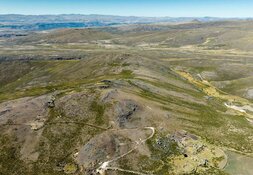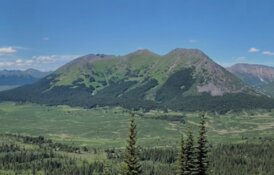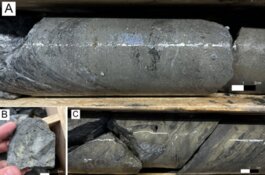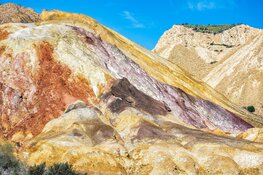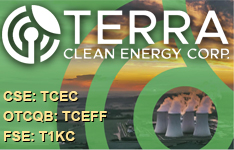Anthony Mariano: My son and I are neither chemists nor engineers—our expertise lies in the area of geology and mineralogy of REE deposits, which are much more complicated than that of other commodities, such as base metals or precious metals.
However, we do believe REEs have unique properties that may be difficult to obtain from other elements.
TMR: How has the REE space changed for investors?
AM: The buzz of the high-demand years was a result of political or economical implications surrounding REEs, which were largely controlled by China. Investors then became interested in REEs. Now the drop in REE prices has changed the game. At this point, investors are not getting as involved, so companies that were attempting to explore potential deposits can't. You need a budget for that. But a lot of our technology requires the use of REEs. The demand is going to be there. There's been a period of quiescence because people have been acquiring REEs from stockpiles, but when those stockpiles are diminished, REE demand is going to pick up again.
TMR: Tony Jr., anything to add at this point?
Tony Mariano Jr.: I am certainly not a market analyst, but we have seen ups and downs in the REE market, as with any commodity. I suspect investors may have also realized that the development of REE deposits often happens at a slower pace than other commodities. The beneficiation of REEs can be very complex. REEs occur in many varied mineral hosts. Complex rock textures, complex mineralogy and mineral chemistry, and varied lanthanide distribution in the REE minerals all contribute to complexities in physical concentration and chemical processing. Many companies are developing innovative techniques to concentrate and process REEs. This takes time and can slow progress toward taking these commodities to the marketplace. Investors may be developing a better awareness of these complexities.
TMR: Apart from money, what's the single biggest hurdle to the development of HREE deposits outside of China?
AM: First and foremost, miners have to understand the type of igneous, metamorphic or sedimentary rock they're dealing with in order to determine if the geology and mineralogy are amenable to economic processing. Some deposits may not even occur within rocks, but soils, sands or river placers. The mineralogy will decide whether you have something with potential. On top of that, miners have to pay attention to permitting, environmental restrictions, the cost of energy and the cost of reagents.
TMR: How would you rank the various mineral sources for REEs, like bastnaesite?
AM: Bastnaesite has historically been a source of light lanthanides or light rare earth elements (LREEs), and it will probably continue to be the best source for LREEs. HREEs and yittrium can be obtained from other REE deposits in North America, such as Kipawa, Quebec; Pajarito, New Mexico; Mineville, New York; and Bokan Mountain, Alaska. Some will be very costly. These are not bastnäsite deposits but contain various HREE minerals. No development has been conducted on Pajarito or Mineville, whereas Matamec Explorations Inc. (MAT:TSX.V; MRHEF:OTCQX) has conducted a considerable amount of exploration work at Kipawa, as has Ucore Rare Metals Inc. (UCU:TSX.V; UURAF:OTCQX) at Bokan Mountain.
TMR: And monazite?
AM: Monazite could be an even more important source than bastnaesite for LREEs. It could also be a low source for HREEs and yittrium if it's mined on a large level. It occurs in many places in the world, but there is a problem associated with it—the presence of thorium. From the '50s to the early '80s, there was a lot of environmental leniency, and you could transport monazite in ships even though it was radioactive. That's no longer the case. Much of it was brought to La Rochelle in France, and they ended up with a large accumulation of radioactive thorium. They finally decided they could no longer pursue this direction and switched from monazite to bastnaesite. Monazite is an LREE phosphate. It runs around 70% rare earth oxide (REO), whereas bastnaesite runs at around 75% REO.
TMR: What about fergusonite?
AM: A beautiful and relatively rare mineral. If you have a garden or a plant on your fire escape and get your fingernails dirty and analyze what's under them, you may run into fergusonite. You may find fergusonite in many places using the current advanced technology. Although fergusonite occurrences are being investigated in a few areas in the world, we've never established a deposit that could provide a sustained source to the marketplace. Fergusonite is an oxide mineral rich in yittrium, HREEs and niobium.
TMJ: Another mineral source worth mentioning is xenotime. Xenotime is an yttrium, HREE phosphate, rich in HREEs. The techniques for chemical processing to extract the yttrium and HREEs have already been established. The problem is finding a deposit with enough xenotime to be economic. There are a few potential xenotime deposits being evaluated now outside of North America.
In addition, eudialyte is a silicate mineral and has not traditionally been a resource for providing HREEs to the marketplace. In the past, there were problems in the chemical processing to extract the REEs, but several companies claim to have resolved these issues. In North America, eudialyte is known to exist at the Kipawa, Quebec deposit, at Pajarito Mountain, New Mexico, at the Red Wine deposit in Labrador and at Dora Bay, Alaska.
There are many other potential REE mineral sources, but for the HREEs, the minerals we have mentioned are those that are being most actively pursued.
TMR: If you were an investor looking at companies with various types of mineral sources, what would be your top names?
AM: The best source for a sustained quantity of HREEs is Matamec Exploration Inc.'s HREE mineral-bearing deposit in Kipawa, Quebec. And the best bastnaesite deposit in the world outside of China is Molycorp Inc.'s (MCP:NYSE) Mountain Pass facility, which is a tremendous source of LREEs, although problems may exist there around permitting, environmental restrictions and energy and reagents costs.
TMR: Matamec is about to come out with a feasibility study. Would your mineralogy studies on the Kipawa deposit be included in that study?
AM: I imagine much of it may be based on that. I can speak for the REE industry when I say that we are anxiously awaiting the results of this study, which will be released September 4. This deposit is the best source for the heavy lanthanides and is one for which we're able to obtain the quickest results.
TMR: Can Matamec make money just making a concentrate and not creating oxides?
AM: That's something it has to figure out. I'm not an insider on Matamec, though I did commence the first REE exploration in Kipawa, Quebec, in 1985.
TMR: Tony Jr., can you comment further on Kipawa project economics?
TMJ: I am not knowledgeable on the Kipawa project economics but I agree with my father that geologically, the Kipawa deposit is very impressive. The textural properties of the Kipawa rocks and the abundance of several HREE minerals make Kipawa uniquely attractive.
TMR: If there were a crisis tomorrow―if, for example, China completely eliminated REE exports, what projects could reach production quickly?
AM: North America would need a domestic source. Although deposits outside of North America could be suppliers, that could be a problem in that a ship carrying critical source concentrate across the ocean may not make it to North American shores. But if we're in critical need, economics are no longer as important. If you need it, you pay for it. We've got sources in the United States, and we've got sources in Canada. To draw a historical parallel, during the beginning of World War II, the U.S. desperately needed quartz, which was used in military submarines. North America was getting all of its quartz crystals from Brazil. Brazil had always transported quartz crystals to the U.S. by ship, until U-boats began to bombard the ships. So the U.S. government supported Bell Labs in developing an immediate technique to synthesize high-purity, optical-quality quartz. That became the basis of all the quartz that's used nowadays.
TMR: Tony Jr., to expand on this scenario, which companies other than Matamec are currently furthest along in developing North American REE projects?
TMJ: The companies furthest along in developing North American REE projects are clearly led by Molycorp. Molycorp holds an existing REE mine in Mountain Pass, CA and, as I understand it, is currently working on process developments and permitting to move toward production. Also, Rare Element Resources Ltd. (RES:TSX; REE:NYSE.MKT) is well on its way toward developing its Bear Lodge, Wyoming deposit. But, these projects are chiefly dominated by the LREEs. For HREE's, other than Matamec, Ucore is probably the furthest along in developing its Bokan Mountain, Alaska deposit.
TMR: What do you make of Ucore Rare Metals Inc.'s Bokan Mountain project?
AM: It's made up of very interesting minerals. Many are fine grain and complex, made up of several different minerals that cannot be concentrated independently; a multi-mineral concentrate must be treated chemically in order to process the multi-mineral concentrate. The chemical treatment and the costs involved at the final stages of chemical processing are important factors.
TMR: Does Ucore's relationship with the Department of Defense give it a leg up?
AM: It should, because the project is in the U.S. There are some very interesting heavy lanthanide minerals at that site. They're fine grain, inextricably associated with quartz and other gang material that has to be removed. Crushing costs will be expensive, and it will be difficult to come up with an independent mineral concentrate. Ucore could probably do a good job by chemically processing a multimineral concentrate. And Bokan Mountain's logistics are excellent. The deposit is less than a kilometer uphill from the shores. You could fill up a ship with concentrate with ease.
TMR: Some analysts estimate that, at current rates of consumption, China's supply of HREEs could evaporate within 15 years. Does that seem realistic to you?
AM: It's hard to tell. China has a tremendous source in the Bayan Obo mining district. It also has a good source of LREEs in Mianning, Sichuan. I did a detailed field and laboratory study there in 1994, so I'm very familiar with this bastnaesite deposit. I can tell you a lot about the nature of the South China clays in the laboratory but not about how long they're going to last. Are they going to be allowed to mine South China clays and put up with the problems that exist? Will any other continent be allowed to process South China clay-type deposits without affecting the environment and while keeping the prices down?
TMR: Is permitting strictly an environmental issue?
AM: No, not strictly. For example, there are some very interesting monazite deposits in the United States, but they're situated in places where people have nice homes, so exploration and development are out of the question. What if you found a beautiful deposit right in New York City? Forget about it. But it's true that some very interesting deposits in the United States and Canada are in conservation areas and national parks. In those cases, permitting hurdles exist for environmental and other restriction reasons.
TMR: What can you tell investors based on your experience in this space?
AM: Investors need to get information from people who are familiar with the nature of REE mineralization that has fed the marketplace. Early in the game, I was told that if I wanted to evaluate a deposit on a world level, I needed to get lots of experience in deposits that actually feed the marketplace. I did that, and it made a huge difference in my ability to make evaluations. Academics may have written excellent papers outlining a particular deposit's geology, but the challenges miners face in approaching exploration or, later down the road, processing—are critical factors academic work doesn't necessarily address.
TMR: Do you see it as part of your job to explain REE mineralization for non-experts?
AM: We try to do that to the extent that we can. It's still very complicated even among experts. It's sometimes difficult to simplify economic geology even for academics who specialize in mineralogy, petrology and geochemistry. It's not enough to run out to Mountain Pass and come back and say, "We went to Mountain Pass. We understand everything." Good luck. I've been working extensively at Mountain Pass since 1965, and I still have a lot to learn.
Anthony N. (Tony) Mariano, PhD, is a geological consultant on rare earths and other rare metals. For decades, he has been the go-to expert on the geology and mineralogy on rare earths, niobium-tantalum and other rare metals. Companies around the world depend on his professional opinions on the potential economic viability of deposits based on mineralogical examination, lab work and field visits.
Tony Mariano Jr. is a geological consultant on rare earths and other rare metals. He also spent several years as an environmental geologist/consultant. He currently works exclusively in conjunction with his father, Anthony N. (Tony) Mariano, consulting on rare earth mineral exploration and evaluation worldwide.
Want to read more Metals Report interviews like this? Sign up for our free e-newsletter, and you'll learn when new articles have been published. To see a list of recent interviews with industry analysts and commentators, visit our Metals Report homepage.
DISCLOSURE:
1) Brian Sylvester conducted this interview for The Metals Report and provides services to The Metals Report as an employee or as an independent contractor. He or his family own shares of the following companies mentioned in this interview: None.
2) The following companies mentioned in the interview are sponsors of The Metals Report: Matamec Explorations Inc. Streetwise Reports does not accept stock in exchange for its services or as sponsorship payment.
3) Anthony Mariano: I or my family own shares of the following companies mentioned in this interview: None. I personally am or my family is am paid by the following companies mentioned in this interview: None. My company has a financial relationship with the following companies mentioned in this interview: None. I was not paid by Streetwise Reports for participating in this interview. Comments and opinions expressed are my own comments and opinions. I had the opportunity to review the interview for accuracy as of the date of the interview and am responsible for the content of the interview.
4) Tony Mariano Jr.: I or my family own shares of the following companies mentioned in this interview: Matamec Explorations Inc. I personally am or my family is paid by the following companies mentioned in this interview: None. My company has a financial relationship with the following companies mentioned in this interview: None. I was not paid by Streetwise Reports for participating in this interview. Comments and opinions expressed are my own comments and opinions. I had the opportunity to review the interview for accuracy as of the date of the interview and am responsible for the content of the interview.
5) Interviews are edited for clarity. Streetwise Reports does not make editorial comments or change experts' statements without their consent.
6) The interview does not constitute investment advice. Each reader is encouraged to consult with his or her individual financial professional and any action a reader takes as a result of information presented here is his or her own responsibility. By opening this page, each reader accepts and agrees to Streetwise Reports' terms of use and full legal disclaimer.
7) From time to time, Streetwise Reports LLC and its directors, officers, employees or members of their families, as well as persons interviewed for articles and interviews on the site, may have a long or short position in securities mentioned and may make purchases and/or sales of those securities in the open market or otherwise.



